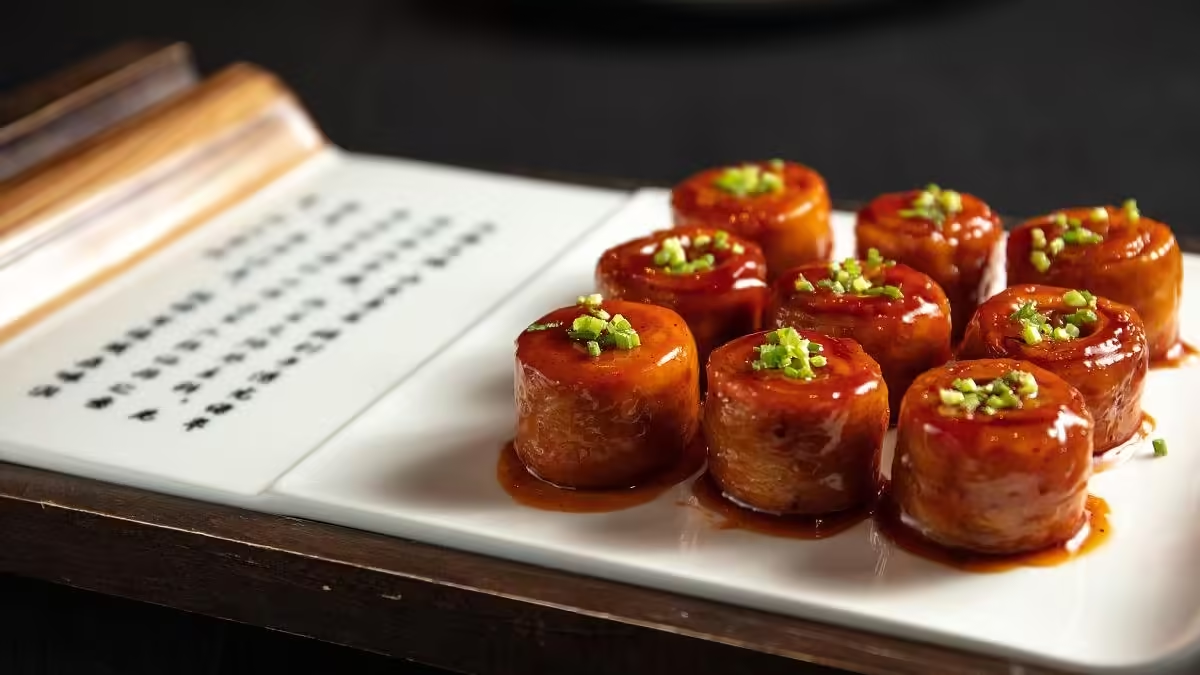Jiu Zhuan Da Chang (九转大肠), or “Nine-Turned Intestines,” is a renowned dish originating from Shandong province, specifically dating back to the Qing dynasty. Initially served in the imperial kitchens, it was originally called “Deep-Fried Fat Intestines.” According to legend, the Qianlong Emperor had a fondness for pig intestines but wished to keep this indulgence a secret. To conceal its identity, the royal chefs deep-fried the intestines until they turned a golden color and curled into appealing shapes. Over time, this dish transcended the royal courts and evolved into a popular street food, undergoing various modifications along the way. In the early years of the Guangxu Emperor’s reign, the owner of the Jiuhualin Restaurant in Jinan further popularized the dish, renaming it “Jiu Zhuan Da Chang.” The name reflects the meticulous, artisanal process of creating this dish, akin to the Taoist concept of “refining the elixir of life” through nine stages of perfection.
Crafting Jiu Zhuan Da Chang: The Preparation Process
The preparation of Jiu Zhuan Da Chang is elaborate, requiring nine meticulous steps: washing, scraping, splitting, boiling, cutting, mixing, rolling, skewering, and frying. Here’s how it’s done:
- Washing: The pig intestines are thoroughly cleaned to remove impurities and odors.
- Scraping: A knife is used to scrape off the fat and membrane from the surface, enhancing cleanliness.
- Splitting: The intestines are cut open to facilitate further processing.
- Boiling: The opened intestines are boiled until semi-cooked, which helps to eliminate any lingering smells.
- Cutting: The boiled intestines are sliced into long strips to help them absorb flavors during cooking.
- Mixing: The strips are seasoned with salt, pepper, and Sichuan pepper powder to enhance the taste.
- Rolling: The seasoned intestines are rolled into circular shapes and secured with bamboo skewers.
- Skewering: The rolled intestines are fixed in place on the skewers to maintain their shape during frying.
- Frying: The skewered intestines are deep-fried until they are golden brown and crispy on the outside while remaining tender on the inside.
Texture and Flavor Profile
The final product of Jiu Zhuan Da Chang is visually striking, with a shiny, reddish hue and a slightly crispy surface that showcases its multiple layers. Upon tasting, diners experience a harmonious blend of sweet, sour, spicy, and salty flavors. The texture is soft and tender, yet rich without being greasy. The dish is known for its intense aroma and robust taste, leaving a lasting impression on anyone who tries it. Additionally, Jiu Zhuan Da Chang is not only delicious but also packed with nutritional benefits, rich in protein, dietary fiber, vitamin K, B vitamins, and potassium.
Serving Suggestions
Jiu Zhuan Da Chang is often served with sweet bean sauce or chili sauce to enhance its flavor profile. In some regions, it is paired with steamed buns (mantou) or twisted rolls (huajuan), creating a delightful dish that can be enjoyed as a wrap or a filling in steamed buns.


